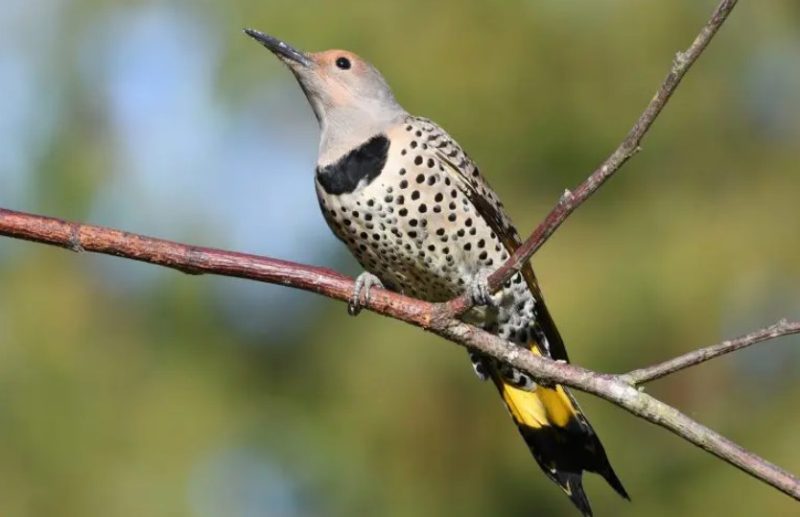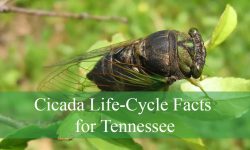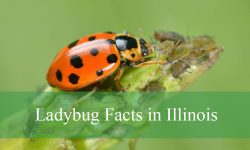Woodpeckers are woven into the character of Wisconsin’s forests. Their tapping echoes across pine barrens, oak ridges, birch stands, river corridors, and the deep spruce-fir pockets that line the state’s northern border. Many hikers recognize their steady drumming long before they ever spot the bird itself. Yet the woodpeckers that live in Wisconsin’s woodlands carry a range of behaviors and adaptations that rarely receive attention.
Across the state, species like the downy woodpecker, hairy woodpecker, red-bellied woodpecker, pileated woodpecker, and yellow-bellied sapsucker shape the health and structure of the forests around them. Their activities influence insect populations, tree growth, nesting opportunities for other wildlife, and even the way forests regenerate. Understanding these little-known traits reveals how complex and essential these birds are to Wisconsin’s ecosystems.
This article explores ten lesser-known characteristics that define woodpeckers in Wisconsin’s diverse forest habitats.
1. Woodpeckers use drumming as communication rather than feeding

Most people associate woodpeckers with the constant tapping sound they produce, yet much of this drumming is not feeding at all. Drumming is a form of communication, used to claim territory, attract mates, or warn off rivals.
Wisconsin’s forests amplify these sounds. Hollow trunks, old snags, and even metal signs produce distinct tones that carry through the trees. Each species chooses drumming spots that match the message they want to send. A pileated woodpecker may use a dead maple for a deep, resonant sound, while a downy woodpecker selects a thinner branch that creates a quicker rhythm.
These drumming patterns are species-specific, giving forest residents a way to communicate across long distances without visual contact.
2. Their beaks and skulls are engineered to absorb repeated impact
The ability to peck wood thousands of times per day without injury is one of the woodpecker’s most remarkable traits. Their beaks are reinforced with dense bone, while flexible cartilage cushions each strike.
Inside the skull, a network of specialized muscles and spongy bone distributes the impact so that vibrations do not reach the brain. Their tongues even play a role; the hyoid apparatus wraps around the skull, acting as a shock absorber during drilling.
Wisconsin’s hardwoods—oak, maple, birch, and aspen—require tremendous force to penetrate. These anatomical features allow woodpeckers to feed, excavate nests, and communicate using surfaces that would severely injure other birds.
3. Woodpeckers rely on highly sensitive hearing to locate insects under bark
While eyesight helps them spot movement, hearing plays a larger role in how woodpeckers find prey. They listen for subtle movements from larvae, beetles, and ants hidden beneath bark layers.
The forests of Wisconsin, especially in the northern counties, contain many older trees with deep bark ridges. In these textured surfaces, insects create faint clicking or chewing sounds. Woodpeckers detect these vibrations and use precise pecking to access the prey inside.
This auditory sensitivity gives them an advantage during colder months, when insects remain dormant under bark and are not easily visible.
4. Their tongues are longer than their entire skull
Woodpecker tongues are among the longest of any bird, extending far beyond the beak to reach insects hidden deep inside wood tunnels. When fully extended, the tongue can sometimes measure three times the length of the beak.
Different Wisconsin species use their tongues differently. Downy woodpeckers use barbed tips to spear insects, while sapsuckers have brush-like tongues suited for collecting sap. Pileated woodpeckers, with some of the longest tongues in the state, use them to reach carpenter ant galleries.
The extraordinary length allows woodpeckers to exploit food sources that few other birds can access.
5. Woodpeckers shape forest ecosystems by creating nesting cavities
One of the most valuable contributions woodpeckers make to Wisconsin forests comes from their habit of excavating cavities. These holes are used for nesting, roosting, and winter shelter.
Once abandoned, these cavities become homes for a range of wildlife: chickadees, bluebirds, owls, flying squirrels, certain duck species, and even bats. Without woodpeckers, many cavity-nesting species would struggle to reproduce successfully.
Older forests with abundant snags and decaying trunks support the densest woodpecker populations. Wisconsin’s forest managers often protect dead or dying trees for this reason, recognizing the ecological ripple effect that woodpecker excavations create.
6. Wisconsin’s woodpeckers help control destructive insect populations
Woodpeckers feed heavily on insects that damage trees. Their diet includes bark beetles, carpenter ants, wood-boring larvae, and emerald ash borer larvae.
Emerald ash borer, in particular, has caused significant ash tree loss throughout Wisconsin. Woodpeckers play a role in slowing the spread of this invasive insect by removing larvae from infested trees. Several studies in the Great Lakes region show woodpeckers increasing their foraging on ash trees as infestations grow.
By controlling populations of harmful insects, woodpeckers help maintain forest health and reduce tree mortality over time.
7. Sapsuckers create sap wells that benefit dozens of other species
The yellow-bellied sapsucker is unique among Wisconsin’s woodpeckers for its specialized feeding behavior. It drills rows of shallow sap wells in tree bark, feeding on the sap that leaks out.
These sap wells attract many other species, including hummingbirds, butterflies, warblers, and small mammals. The sugar-rich sap provides energy during early spring when flowers and insects are limited.
Trees often heal quickly from these wounds, especially if the wells are spaced across different areas rather than concentrated in one spot. Sapsucker feeding creates microhabitats that ripple through the food web.
8. Woodpeckers use vertical territory, not just horizontal space
Territorial behavior in woodpeckers includes both horizontal and vertical zones. A single woodpecker may claim an area several hundred feet across and several stories high.
This vertical zoning reduces competition in dense forests. Downy woodpeckers often forage on thin twigs in the upper canopy. Hairy woodpeckers prefer thicker trunks at mid-level heights. Pileated woodpeckers concentrate on large logs and dead snags at lower heights.
By dividing territory vertically, woodpeckers exploit the full height of Wisconsin’s forests without overlapping excessively.
9. Winter behavior reveals surprising resilience in harsh northern climates
Many birds migrate south for winter, but several Wisconsin woodpecker species remain year-round. They survive frigid temperatures through a combination of insulation, reliable food sources, and roosting behaviors.
Downy and hairy woodpeckers often roost in cavities to stay warm. Pileated woodpeckers shelter in deep excavated chambers that trap heat. Their ability to extract insects hidden under bark gives them a stable winter diet, even during cold snaps that limit food for other species.
Snow-covered forests amplify the sound of winter tapping, making woodpeckers more noticeable during the quietest months of the year.
10. Woodpecker populations reflect the health of Wisconsin’s forests
Because they depend on dead wood, large trees, and insect-rich habitats, woodpecker populations serve as indicators of forest quality. Healthy forests host abundant downy, hairy, and red-bellied woodpeckers. Regions with old-growth pockets may support pileated woodpeckers, which require large territories.
When forests lose diverse age structure or lack dead trees, woodpecker numbers decline. Conservation efforts in Wisconsin often include leaving snags standing, restoring mixed hardwood stands, and managing for species-rich understories.
Woodpecker presence signals a balanced ecosystem—and their absence signals emerging problems.
Frequently Asked Questions
What species of woodpeckers live in Wisconsin?
Common species include downy, hairy, red-bellied, pileated, northern flicker, and yellow-bellied sapsucker.
Why do woodpeckers peck on houses?
They may be searching for insects, establishing territory, or creating drumming surfaces with good acoustic quality.
Are woodpeckers harmful to trees?
Feeding usually targets dead or infested wood and often benefits overall forest health.
Do woodpeckers migrate?
Most Wisconsin woodpeckers stay year-round, except the yellow-bellied sapsucker, which migrates south each winter.
How do woodpeckers avoid brain damage?
Their skulls, muscles, and beaks are structured to absorb repetitive impact safely.
Why do woodpeckers make rows of small holes?
This behavior is typical of sapsuckers, which drill sap wells to feed on tree sap.
Do woodpeckers help control pests?
Yes. They reduce populations of harmful insects such as emerald ash borer larvae.
Where do woodpeckers nest?
They excavate cavities in dead or dying trees, standing snags, or occasionally large, decaying limbs.
Why are pileated woodpeckers less common?
They require larger tracts of mature forest, making them more sensitive to habitat fragmentation.
Do woodpeckers sing?
They communicate primarily through drumming and calls rather than melodic songs.
Final Thoughts
Woodpeckers are far more than background noise in Wisconsin’s forests. Their behaviors influence everything from insect populations to habitat availability for other species. The traits that allow them to thrive—from long tongues and precision drumming to cavity excavation and vertical foraging—reveal a deep connection to the forests they inhabit.
Seeing a woodpecker move along a trunk or hearing the sharp echo of its tapping offers a glimpse into a hidden world of adaptations and ecological roles. Understanding these little-known traits enriches the experience of walking through Wisconsin’s woodlands and highlights the importance of conserving diverse, healthy forests.






